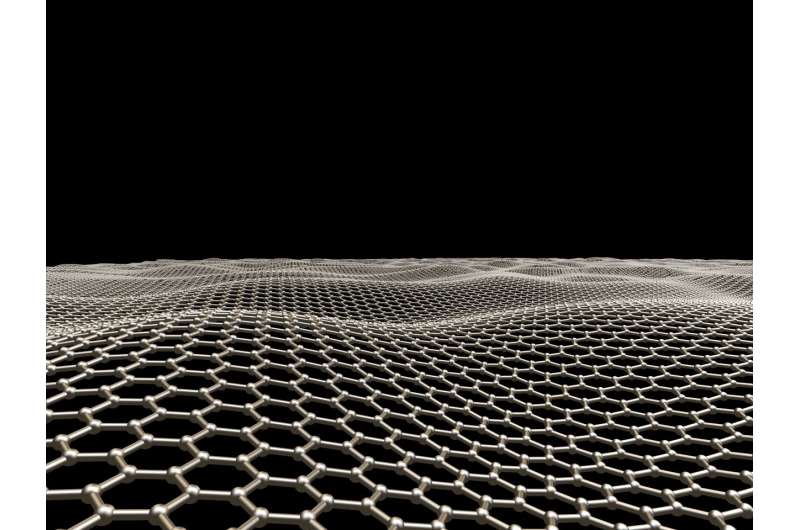Physicists show novel Mott state in twisted graphene bilayers at 'magic angle'

A University of Oklahoma physics group sheds light on a novel Mott state observed in twisted graphene bilayers at the 'magic angle' in a recent study just published in Physical Review Letters. OU physicists show the Mott state in graphene bilayers favors ferromagnetic alignment of the electron spins, a phenomenon unheard of in conventional Mott insulators, and a new concept on the novel insulating state observed in twisted graphene bilayers.
"We are trying to understand the nature of the Mott state in this system," said Bruno Uchoa, associate professor in the Homer L. Dodge Department of Physics and Astrophysics. "The Mott state we proposed is an insulating state that may lead to superconductivity in some conditions, yet is different from Mott states observed in other systems. There are fundamental differences, however, and this is what we are studying."
Mott physics has been extensively investigated in the last decades in high-temperature cuprate superconductors—materials that in some conditions can transmit charge currents at relatively high temperature without producing any heat dissipation. In the Mott phase, however, the motion of charge carriers is confined by their strong mutual electric repulsion, which leads to insulating behavior, when a material is unable to conduct any electricity.
It also leads to anti-ferromagnetism, a state where the spins of two electrons sitting next to each other are anti-parallel. The latter property is the result of the Pauli exclusion principle, one of the many exotic properties of quantum mechanics, which states that the two electrons cannot occupy the same quantum state. The new study shows that the Mott state in graphene departs from other known examples in fundamental ways.
Using two sheets of graphene twisted at a very small angle, known as the 'magic angle,' the system correlates with properties seen in high-temperature superconductors. Graphene is made of carbon and the thinnest material in the universe, only one atom thick. The material is like a honeycomb lattice, so two layers twisted at a very small angle result in the electrons moving differently. The new work shows that lattice constraints imposed by the small twist angle can strongly favor parallel alignment of the electronic spins even when electrons are strongly repelling each other. The OU physicists proposed a novel Mott state where these electrons behave in ways not seen before.
"Twisted graphene bilayers are very promising for a variety of technological applications in nanodevices," said Kangjun Seo, a postdoctoral researcher in the OU group, who was first author on the study. "This is a very interesting and important physical system."
The OU paper, "Ferromagnetic Mott State in Twisted Graphene Bilayers at the Magic Angle," recently was published in Physical Review Letters.
More information: Kangjun Seo et al. Ferromagnetic Mott state in Twisted Graphene Bilayers at the Magic Angle, Physical Review Letters (2019). DOI: 10.1103/PhysRevLett.122.246402
Journal information: Physical Review Letters
Provided by University of Oklahoma



















